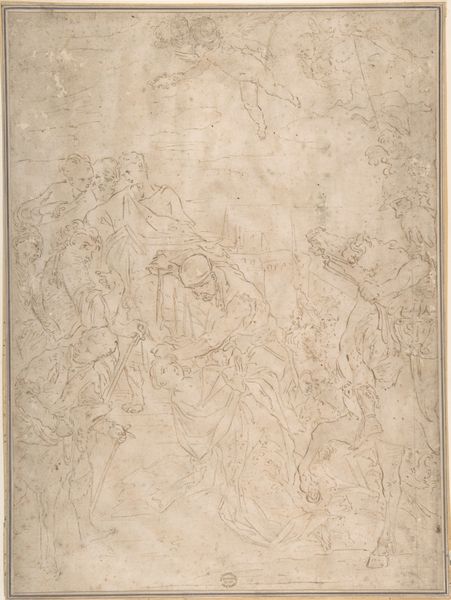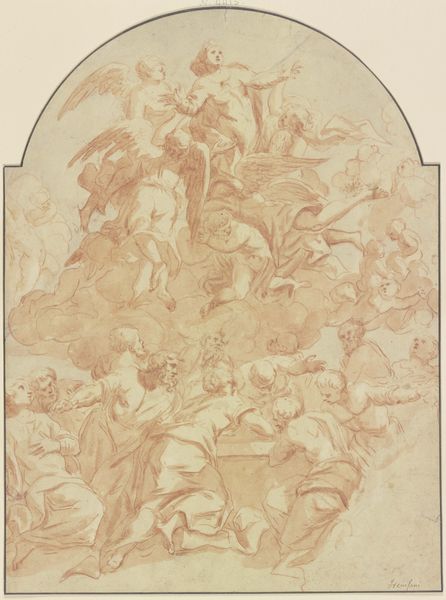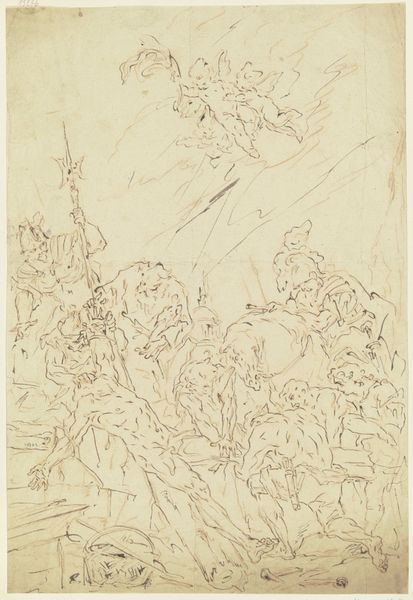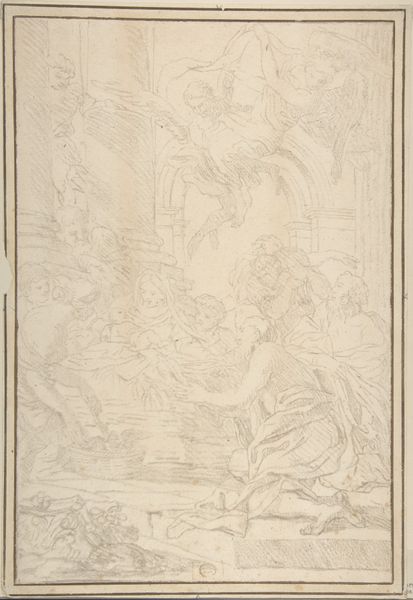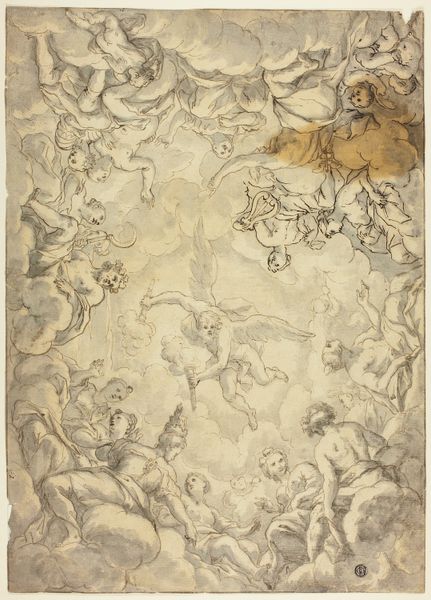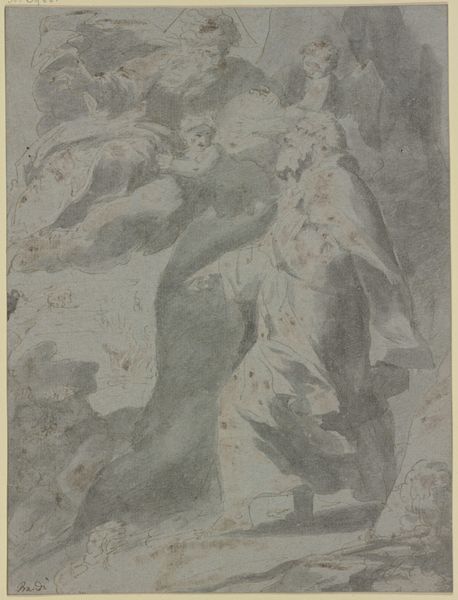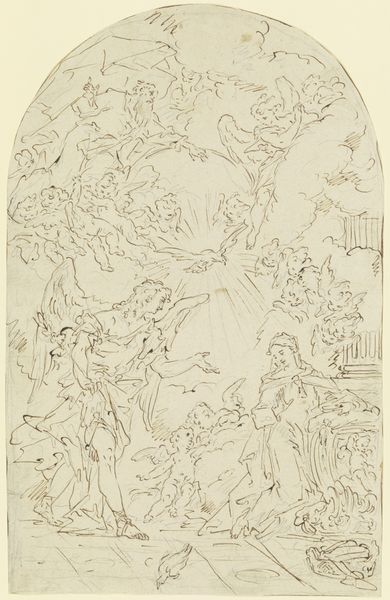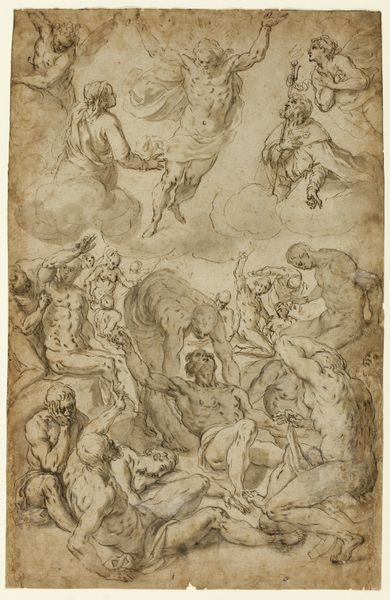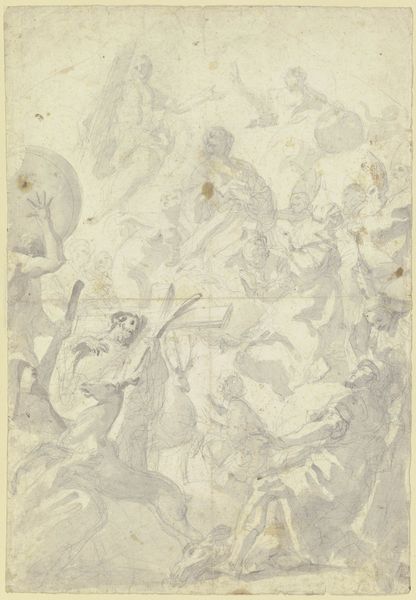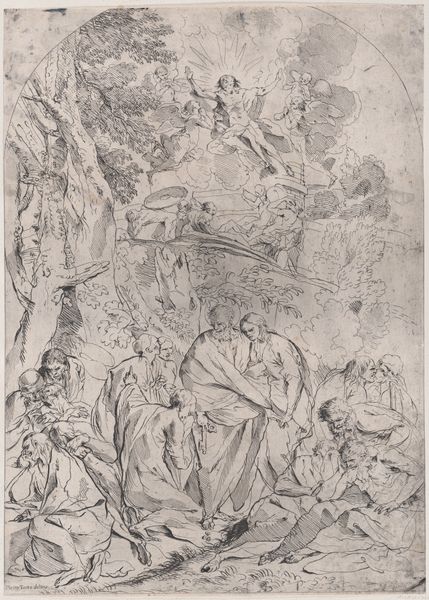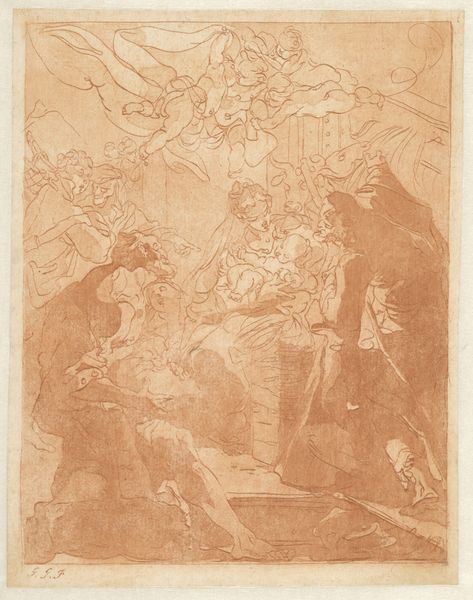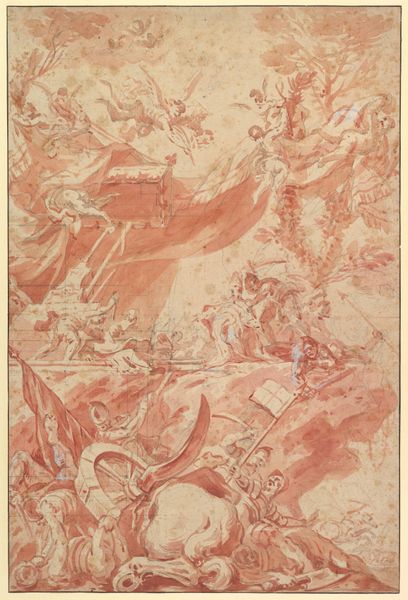
drawing, print, etching, paper, ink, pen
#
drawing
#
allegory
#
baroque
#
ink painting
# print
#
etching
#
etching
#
figuration
#
paper
#
ink
#
line
#
pen
#
history-painting
Dimensions: 371 × 264 mm
Copyright: Public Domain
Editor: So, here we have "The Triumph of Truth Over Heresy," an etching by François Boitard from around 1710. There’s such dramatic energy in the composition. What grabs you when you look at it? Curator: Immediately, I consider the sociopolitical context of imagery like this. Visual rhetoric during this period was powerfully intertwined with religious and political power. Consider the term "Triumph." How does the imagery reinforce prevailing hierarchies and suppress dissenting voices? Editor: The angel wielding a sword and the figures contorted in distress definitely suggest a hierarchy! But who were the audiences for these images? Were they meant for the public or circulated in more exclusive circles? Curator: Both! Prints were relatively accessible, allowing these ideologies to reach a broader audience than, say, a large-scale history painting in a royal court. Etchings also circulated amongst the elites, solidifying a particular understanding of power and orthodoxy. Notice how Truth is idealized, while Heresy is demonized. Do you think the drawing's composition adds to the message of “triumph?” Editor: I think the way Truth literally towers above the other figures visually establishes dominance, as does her placement in a cloud of cherubic faces. Knowing its function as political and religious propaganda gives it a different edge, right? Curator: Precisely. Understanding its role within the visual culture of the period sheds light on how it worked to shape and reinforce the era’s beliefs. The dissemination of imagery impacts perception, a truth even in our contemporary times. Editor: It’s unsettling how clearly the artwork embodies that historical manipulation through propaganda, making it still resonate in the modern-day. It emphasizes how an awareness of these underlying narratives can add a critical layer to viewing artwork today. Curator: Indeed. We must consider these works in context to fully appreciate their impact, especially since its rhetoric is far from ancient.
Comments
No comments
Be the first to comment and join the conversation on the ultimate creative platform.
